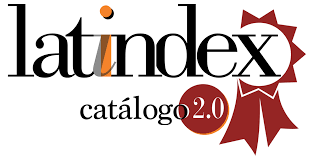Praxis e valores na assessoria de imprensa: A perceção dos jornalistas portugueses / Press office work: information management or manipulation? The perception of the Portuguese journalists
DOI:
https://doi.org/10.5783/revrrpp.v12i23.759Keywords:
Comunicação estratégica, comunicação organizacional, relações públicas, assessoria de imprensa, jornalismoAbstract
O relacionamento entre assessores e jornalistas é um tema tão antigo quanto polémico. Alguns autores encontram uma relação de interdependência na sua prática profissional, enquanto outros entendem a assessoria como para-jornalismo, uma atividade manipulativa da opinião pública, através do agendamento mediático. Tendo presente estas visões antagónicas, este estudo visa explorar qual o tipo de relacionamento que se verifica, no atual panorama português, entre os jornalistas e os assessores de imprensa. Através de uma metodologia quantitativa pretendeu-se compreender, por via da aplicação de um inquérito por questionário, qual a perceção dos jornalistas acerca dos comportamentos, trabalho e valores que regem a assessoria de imprensa. As respostas dos 417 inquiridos revelaram que a maioria dos jornalistas considera existir um ambiente de respeito mútuo, mas também que somente 23% concorda que a relação entre jornalistas e assessores de imprensa é de interdependência. Além disso, a associação da atividade de assessoria com propaganda prevalece na opinião de muitos jornalistas, o que sugere não ter sido ainda alcançada uma real relação de confiança e de espírito de equipa entre ambos os grupos profissionais.
Palavras-Chave: comunicação estratégica; comunicação organizacional; relações públicas; assessoria de imprensa; jornalismo
Abstract
Media relations is at the core of Public Relations activities in both corporate, governmental, and non-governmental level. All and any organisation need to manage their relationship with the informative media to maintain a positive image in the public sphere. However, the relationship between press officers and journalists is a subject as old as controversial. Some authors find an interdependent relationship in their professional practice (eg. Chinem, 2003; Lopes, 2017), while others understand the press office as parajournalism (eg. Schudson, 2003; Ribeiro, 2015a; 2015c), an activity that manipulates the public opinion, through agenda-setting mechanisms (eg. Moloney, 2000). Bearing in mind these conflicting views, the main purpose of this study is to explore and critically discuss the journalist-press officers’ relationship in the current Portuguese landscape. This study is relevant because there is no actual research on the journalism-PR relationship in the Portuguese context.
The article is structured in two main parts. The first part develops a brief theoretical review, which aims to discuss the practical and conceptual frontiers that involve the operational field of press office, situated in the relationship between professional sources of information and journalists. As the perception of the journalist-public relations relationship depends on the social-cultural, political and economic context, differences between countries are also debated in this theoretical section. In the second part of the article the main results of a survey applied to a sample of Portuguese journalists are discussed, to answer the research question that guided this research: How do journalists perceive the work of press advisors and the interactions established between them?
The questionnaire, disseminated via email, was administered between April 3 and June 25 of 2021 and it is focused on the journalist's praxis as well as on the values they attribute to press office work. The scope of this investigation is, therefore, based on the analysis of the routines, practices and values of the Portuguese journalists. According to the responses of 417 journalists, it was ascertained that the majority see a mutual respect environment between Press officers and Journalists. However, only 23% agreed that the relationship between them is one of interdependence. Even though most journalists prefer to resort to direct sources of information, they recognize the importance of the press office work and admit publishing content disseminated by the press offices, at least once a week. Furthermore, many journalists believe that the press office is actively associated with propaganda and that the journalism sphere could exist without PR practitioners. That suggests that a trustworthy and cooperative relationship between both professional groups has yet to be established.
This research enhances the reflection about the current state of the relationship between the Portuguese journalist and public relations spheres, from the journalist perspective. In addition, new insights are presented about media relations practices that can contribute to make it more proficient and respected. Finally, new avenues of research are proposed, centred in the journalist perspective and in the public relations view.
Keywords: strategic communication; organizational communication; public relations; press office; journalism
Downloads
References
ALMANSA, A. (2010). Assessorias de comunicação. São Caetano do Sul: Difusão.
ALMANSA, A. (2009). Relaciones Públicas Y Medios De Comunicación. Estudio Del Caso Español. Razón y Palabra, v. 14, n. 70. Quito: Universidad de los Hemisferios.
ANDERSON, C. W., DOWNIE JR. L. & SCHUDSON, M. (2016). The News Media: What Everyone Needs To Know. Oxford: Oxford University Press.
ATAIDE, T. & RODRIGUES, L. (2012). Atuação do comunicólogo frente a uma Assessoria de Comunicação. Amazonia: FBN.
CASTILLO, A. (2010). Introducción a las Relaciones Públicas. Málaga: Instituto de Investigación en Relaciones Públicas (IIRP).
CHINEM, R. (2003). Assessoria de Imprensa: como fazer (2nd ed.). São Paulo: Summus.
DUARTE, J. (2001). Assessoria de imprensa: o caso brasileiro. Revista Brasileira de Ciências da Comunicação, v. 24, n. 1, (pp. 79-105).
GONÇALVES, G. (2014). Relações Públicas Políticas: raízes, desafios e aplicações. Comunicação e Sociedade, v. 26, (pp. 90-98). DOI: https://doi.org/10.17231/comsoc.26(2014).2027
GONÇALVES, G. (2013). Ética das Relações Públicas. Coimbra: MinervaCoimbra.
GONÇALVES, G. (2010). Introdução à Teoria das Relações Públicas. Porto: Porto Editora.
GRADIM, A. (2000). Manual de Jornalismo. Covilhã: Livros LabCom, Universidade da Beira Interior.
JORGE, M. C. & RIBEIRO, V. (2020). Os sítios da internet como ferramenta de promoção mediática das principais salas de concerto da Europa. Prisma.com, n.41, (pp. 84-99). DOI: 10.21747/16463153/41a6
LOPES, B. (2017). O que é a assessoria de imprensa. São Paulo: Brasiliense.
MACNAMARA, J. (2014). Journalism–PR relations revisited: The good news, the bad news, and insights into tomorrow’s news. Public Relations Review, v. 40, n.5, pp. (739-750). DOI: 10.1016/j.pubrev.2014.07.002
MAUAD, S. (2009). “Os Segredos de um Bom Assessor de Imprensa”. In BOCC: Biblioteca Online de Ciências da Comunicação [online].
MOLONEY, K. (2006). Rethinking Public Relations: Pr Propaganda And Democracy. Oxford: Routledge.
MOUTINHO, A. E SOUSA, J. P. (2003). Assessoria de Imprensa na Europa. In J. Duarte (eds.), Assessoria de Imprensa e Relacionamento com a Mídia, São Paulo: Atlas.
RIBEIRO, V. (2015a). Assessoria de Imprensa: Fundamentos teóricos e práticos – O relacionamento com os jornalistas, a produção de conteúdos e os eventos como motor de produção noticiosa. São Paulo: Novas Edições Acadêmicas.
RIBEIRO, V. (2015b). O pragmatismo das fontes profissionais de informação: perspectiva teórica não-conspirativa da relação entre assessores de imprensa e jornalistas. Organicom, v. 12, n. 22, (pp. 46-56). DOI: 10.11606/issn.2238-2593.organicom.2015.139266
RIBEIRO, V. (2015c). Os press agentes como pioneiros da assessoria de imprensa: conceitos, práticas e atores entre 1830 e 1914. Revista Brasileira da História da Mídia, v.4, n.2, (pp. 123-133). DOI: 10.26664/issn.2238-5126.4220154184
RIBEIRO, V. (2014). O campo e o triângulo operacional da assessoria de imprensa. In G. Gonçalves & M. Guimarães (org.), Fronteiras e Fundamentos Conceptuais das Relações Públicas, v.1 (pp. 65-87). Covilhã: Livros LabCom, Universidade da Beira Interior.
SARTOR, B. A. (2008). Assessoria de imprensa e visibilidade: a imagem-conceito das organizações no incontrolável domínio da notícia. Conexão – Comunicação e Cultura, v.7, n.14 (pp. 127-139). Caxias do Sul: UCS.
SCHUDSON, M. (2003). The sociology of news. Nova Iorque: W. W. Norton & Company.
SEBASTIÃO, S. P; SARAMAGO, M. & RANGE, S. (2016). A relação com os jornalistas e a importância da credibilidade e da honestidade na assessoria mediática em Portugal. Comunicação Pública, v.11, n. 21, (pp. 1-14). DOI: 10.4000/cp.1308
SHAW, T. & WHITE, C. (2004). Public relations and journalism educators’ perceptions of media relations. Public Relations Review, v.30, n.4, (pp. 493-502). DOI: 10.1016/j.pubrev.2004.08.004
ZIERT, J. (2016). Assessoria de imprensa e a gestão de imagem por meio das redes sociais na internet. Trabalho de Conclusão de Curso, UFSC - Universidade Federal de Santa Catarina.
Downloads
Published
How to Cite
Issue
Section
License
Authors publishing in this journal agree to the following terms:
a. Authors retain copyright and grant the journal the right to be the first publication of the work as licensed under a Creative Commons Attribution License that allows others to share the work with an acknowledgement of authorship of the work and initial publication in this journal.
b. Authors may separately enter into additional arrangements for non-exclusive distribution of the version of the work published in the journal (e.g., placing it in an institutional repository or publishing it in a book), with an acknowledgement of initial publication in this journal.
c. Authors are allowed and encouraged to disseminate their work electronically (e.g. in institutional repositories or on their own website) before and during the submission process, as it can lead to productive exchanges, as well as earlier and higher citation of published work (see The Effect of Open Access).




